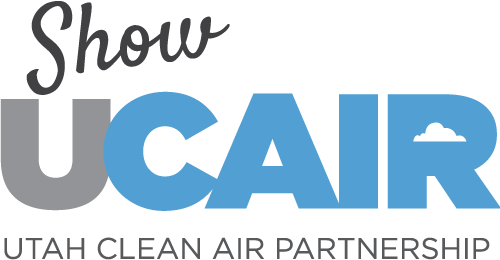We welcomed warmer weather with the May Partner Meeting. This month we heard from Seth Lyman, the Bingham Research Center Director and Research Associate Professor at Utah State University, Kerry Kelly, Associate Professor of Chemical Engineering at the University of Utah, Justin Smart, Partner of Penna Powers, and Ryan Bares, Environmental Scientist from Utah’s Division of Air Quality.
Seth Lyman discussed how the Uintah Basin experiences air quality problems similar to the Wasatch Front with PM 2.5 inversions as well as Ozone pollution. The Uintah Basin is low in latitude so there is a larger area for sunlight to react with precursor air pollutants to cause Ozone pollution. Along the Wasatch Front, emissions and pollution are largely from mobile and area sources, but in the Uintah Basin, the pollution mainly stems from the oil and gas industry. In the locations oil production has increased ozone has also increased. Many innovative tactics are being currently implemented to reduce emissions including increased leak detection and repair, communicating episode-specific alerts on poor air quality days, as well as tighter regulations of the oil and gas industry. An example of communication tactics is the industry driven campaign – Latch the Hatch – targeting industry professionals to latch the large containers of gas and make sure they are sealed properly. Moreover, the Utah State University Ozone Alert Program helps the industry be far more aware of how to monitor and change behaviors to stop gas leaks during air pollution episodes. Please visit the following links for more information on the Ozone Alert Program and the work being accomplished at Utah State University’s Bingham Research Center.
Next, Kerry Kelly discussed the University of Utah StepWise Program: Improving Energy Efficiency and Air Quality in Utah. In collaboration with Dominion Energy, the program focuses on providing emission and cost-benefit assessments for buildings throughout Utah, specifically serving manufacturers, municipalities, commercial buildings, and schools. The goal is to help costumers that have high natural gas usages become more energy and cost efficient. The assessment process first starts with a utility bill analysis, then the program staff visit the site to set up data tracking equipment. After the data is collected and analyzed, the company is given a report on the possible energy efficient emissions reduction equipment to implement. All the businesses that received an assessment report implemented some or all the recommendations outlined in the report. Please visit the following link for more information on the StepWise Program.
We then heard a review of the 2021-2022 UCAIR Winter Air Quality Campaign from Justin. Penna Powers works very collaboratively with UCAIR on the air quality campaigns, and provides support to UCAIR with branding, marketing, and communication efforts. As you may already be aware of, UCAIR took a little bit of a new direction this year and the ShowUCAIR message was refreshed with the updated branding of Live to Breathe. We saw a large number of impressions from the 2021-2022 winter campaign totaling 33,991,824. The campaign included messaging across a variety of outlets including mass media, TV partnerships, online ads, website, social media, and public relations. So, what is the impact? We measured the impact of the campaign by disseminating a survey and found that 94% of respondents are familiar with personal actions they can take to improve air quality. 75% reported being idle free and 84% lowered their thermostats! After a widely successful winter campaign UCAIR is gearing up for a summer campaign focused on Ozone pollution. Follow along and spread the information to the community!
Ryan then gave us an air quality update starting with a program highlight – the 2022 Lawnmower Exchange. Over 6,000 registered in the first 24 hours and 4,500 people were drawn to participate. Over 3,000 gas powered lawn mowers were recycled. Then we shifted to the current air quality conditions. Utah has experienced about 6-7 dust events this year with PM2.5 and PM10 concentrators especially high during the last event. Going into the summer we will be more disposed to Ozone pollution. Here are a few things that we can do to stay safe and reduce emissions specific for Ozone: reduce driving, do yard work in morning or evening when it is not as hot or sunny, and on poor air quality days limit your exposure by shifting time spent outside to lower ozone spike timeframes (morning or evening).
We then heard from our partners:
Kelly Barrett and Natalie Fillerup, Utah Clean Cities – UCC andASPIRE are holding an event on May 19th, featuring EV vehicles and technology. UCC received an environmental justice grant from the EPA and we are looking for community partners to help in targeting these communities in the West Valley and UIPA site.
Closing Mentions – Kim Frost, UCAIR:
Thank you to everyone that participated and attended the UCAIR Annual Summit. Bipartisan Clean Air Caucus has picked back up and had their first meeting of this year this week. If you were not able to attend, you are able to watch the recording on the Utah Clean Air Caucus Facebook page. UCAIR’s grant program applications open June 15th. As you are out in the communities, please promote this funding opportunity. In June we have our next meeting but in July we will take that month off for the partner meetings.

